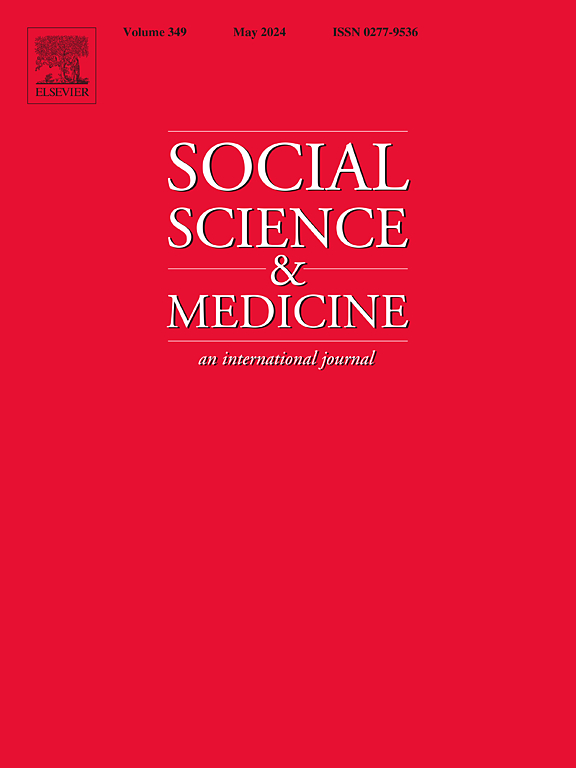与边缘化相关的教育水平对移民自评身心健康的影响递减:对六个高收入国家的分析
IF 5
2区 医学
Q1 PUBLIC, ENVIRONMENTAL & OCCUPATIONAL HEALTH
引用次数: 0
摘要
目的评估移民受教育程度与自评身心健康的相关性是否弱于非移民,并探讨性别交叉点。方法我们使用全球繁荣研究第一轮的数据进行了横断面研究,这是一项具有国家代表性的多国调查。数据来自澳大利亚、德国、西班牙、瑞典、英国和美国。自我评价的身体和心理健康以11分制进行测量。教育水平根据具体国家分类分为四个等级。移民身份被定义为出生在居住国以外。我们分别估计了每个国家的线性回归模型,包括教育水平、移民身份和性别之间的相互作用项。然后使用随机效应荟萃分析汇总特定国家的估计值。结果共纳入75,464名受试者。教育水平越高,自评健康得分越高,但移民的得分更高。然而,对于移民来说,教育水平与健康结果之间的关联明显较弱——他们降低了健康效益。此外,与男性移民相比,女性移民的健康回报下降更为明显,但这些估计的准确性较差。由于边缘化相关的收益减少,移民从相同教育水平中获得的健康效益低于非移民同行。这种健康差距在女性移民中更大。结构和背景障碍阻碍了教育对边缘人口的保护作用。本文章由计算机程序翻译,如有差异,请以英文原文为准。
Marginalization-related diminished returns of education level on self-rated physical and mental health among immigrants: an analysis of six high-income countries
Objective
To assess whether the association between level of education and self-rated physical and mental health is weaker for immigrants than non-immigrants, and to explore gender-based intersections.
Methods
We conducted a cross-sectional study using data from the Wave 1 of the Global Flourishing Study—a multi-country survey with national representativeness. Data were drawn from Australia, Germany, Spain, Sweden, the United Kingdom and the United States. Self-rated physical and mental health were measured on a 11-point scale. Level of education was categorized into four levels based on country-specific classifications. Immigrant status was defined as being born outside the country of residence. We estimated linear regression models separately for each country, including interaction terms between educational level, immigration status, and gender. Country-specific estimates were then pooled using random-effects meta-analysis.
Results
A total of 75,464 participants were included. Self-rated health scores increased with higher education levels, but immigrants had higher scores. However, the associations between level of education and health outcomes were significantly weaker for immigrants—they have reduced health benefits. Further, diminished health returns were more pronounced among female immigrants than their male counterparts, but these estimates had poor precision.
Conclusions
Due to marginalization-related diminished returns, immigrants get less health benefits from the same level of education attained than their non-immigrant counterparts. This health gap is wider among female immigrants. Structural and contextual barriers obstruct the protective effects of education among marginalized populations.
求助全文
通过发布文献求助,成功后即可免费获取论文全文。
去求助
来源期刊

Social Science & Medicine
PUBLIC, ENVIRONMENTAL & OCCUPATIONAL HEALTH-
CiteScore
9.10
自引率
5.60%
发文量
762
审稿时长
38 days
期刊介绍:
Social Science & Medicine provides an international and interdisciplinary forum for the dissemination of social science research on health. We publish original research articles (both empirical and theoretical), reviews, position papers and commentaries on health issues, to inform current research, policy and practice in all areas of common interest to social scientists, health practitioners, and policy makers. The journal publishes material relevant to any aspect of health from a wide range of social science disciplines (anthropology, economics, epidemiology, geography, policy, psychology, and sociology), and material relevant to the social sciences from any of the professions concerned with physical and mental health, health care, clinical practice, and health policy and organization. We encourage material which is of general interest to an international readership.
 求助内容:
求助内容: 应助结果提醒方式:
应助结果提醒方式:


